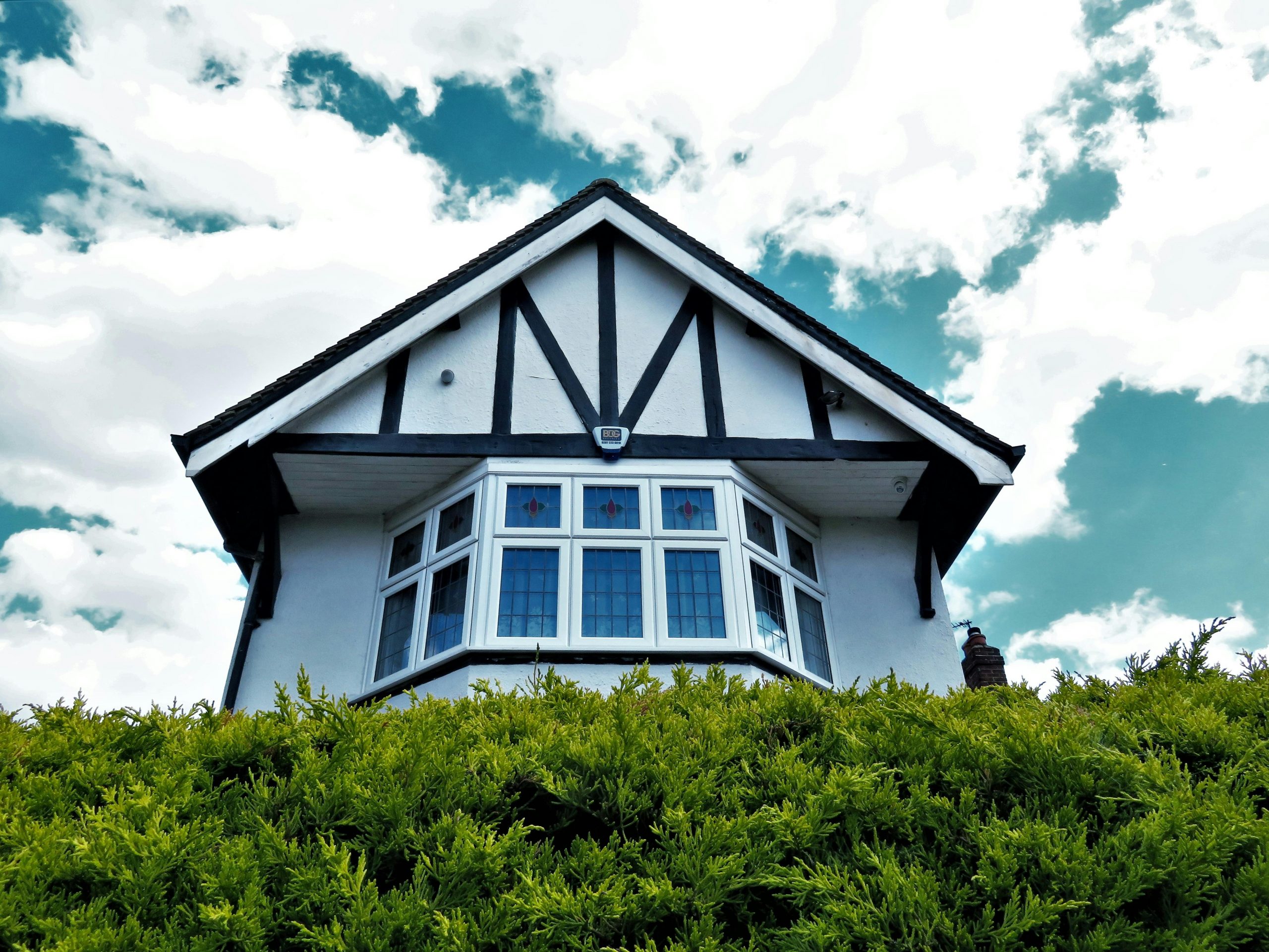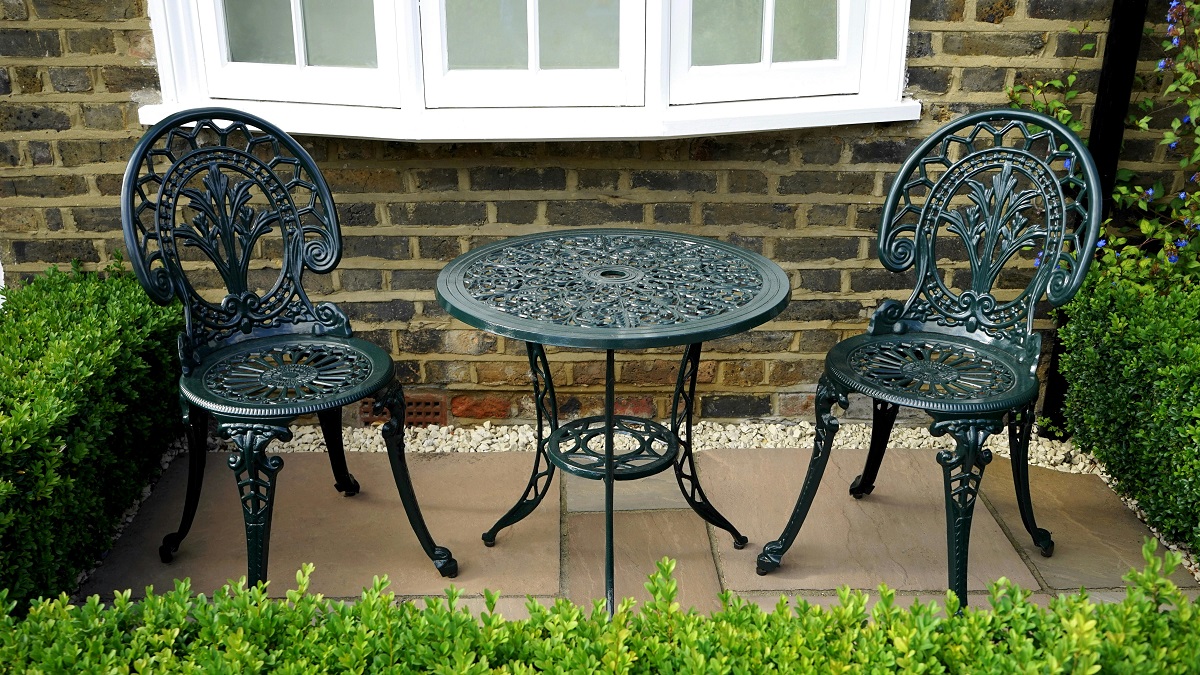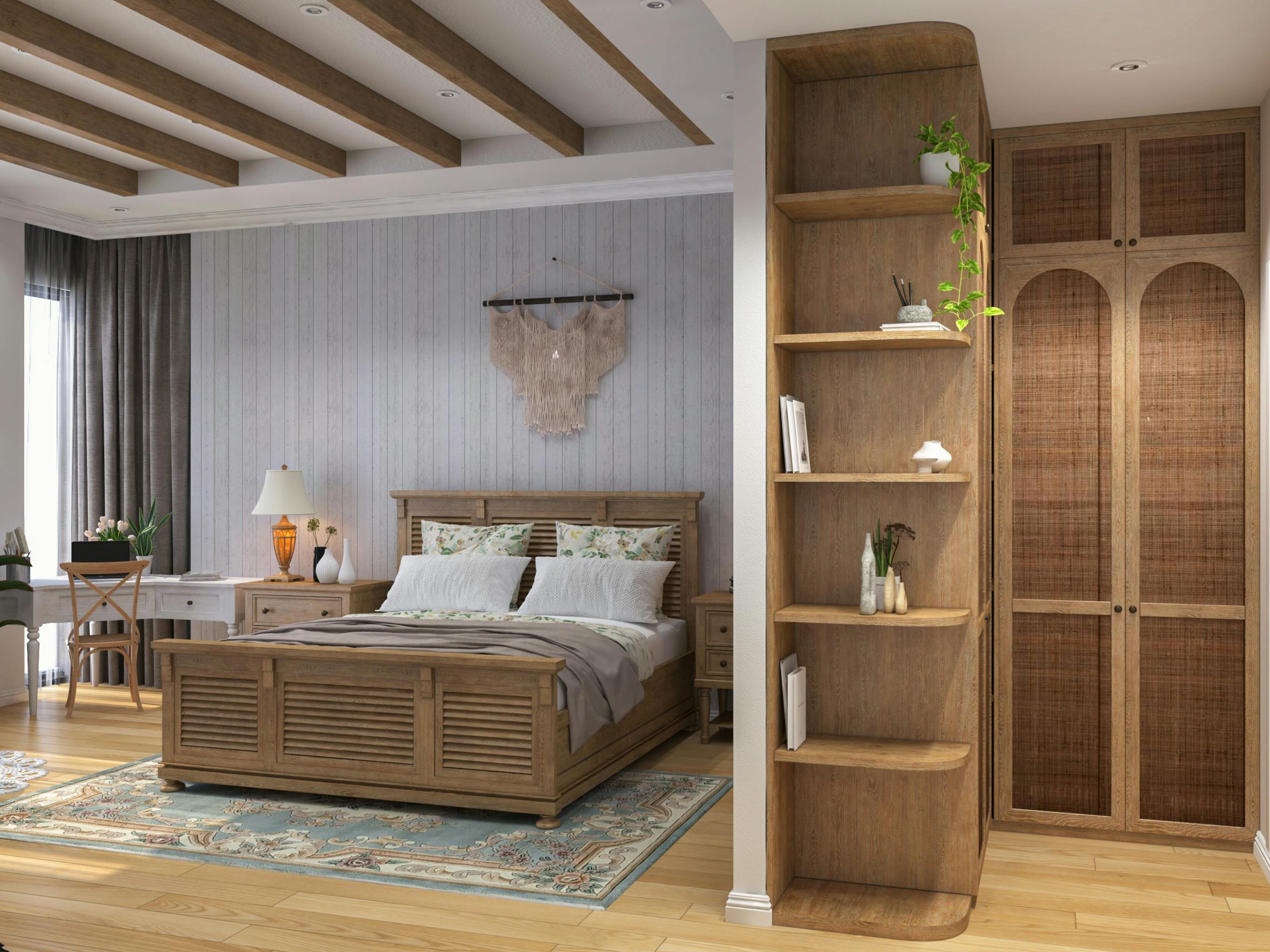

Tudor-style homes stand out with their steep gables, decorative half-timbering, and leaded windows. These homes exude charm, history, and Old-World character—but they can also pose a challenge when it’s time for renovation. Should you preserve the classic features? Or lean into transformation with a more modern take?
Whether you’re aiming for faithful preservation or tasteful transformation, this guide walks you through how to make the right decisions—without losing the character that makes Tudors so unique.
What Makes a Tudor Style Home So Distinctive?
Before diving into renovation decisions, it’s worth understanding what defines Tudor style. Originally inspired by 16th-century English architecture, the American Tudor Revival became popular in the early 1900s and saw a peak in the 1920s and 1930s.
Signature Tudor Elements:
- Steeply pitched gable roofs
- Decorative half-timbering on upper stories
- Tall, narrow windows with small panes
- Brick or stone exteriors
- Massive chimneys, sometimes with chimney pots
- Arched doorways and built-in nooks
These elements contribute to the cozy, castle-like look that appeals to many design-conscious homeowners. But they also come with unique limitations—especially when it comes to natural light, insulation, and layout.
Should You Preserve or Transform?
The big question: Do you keep the traditional features or bring the space into the 21st century? For most homeowners, the answer lies somewhere in between.
According to interior designers and architects who specialize in period homes, here are a few guiding principles:
Preserve When:
- The feature is structurally sound and original
- The detail adds historical charm and authenticity
- It aligns with your lifestyle and functionality needs
- You’re planning to resell to a buyer who values period design
Transform When:
- The layout or material no longer serves your lifestyle
- The element is not original or has been poorly replaced
- You need better energy efficiency, lighting, or functionality
- You want to blend old and new for a more personal aesthetic
Many successful Tudor renovations involve honoring the exterior charm while reimagining the interior for open-concept living, better light, and contemporary materials.
Where to Preserve: Features Worth Keeping

Not everything in a Tudor home needs a dramatic update. Many of the original details were designed with craftsmanship and longevity in mind. In fact, some features are so tied to Tudor identity that removing them risks stripping the home of its unique charm. Here’s what home design professionals recommend you keep intact:
1. Original Millwork and Trim
Millwork in Tudor homes isn’t just decorative—it’s often hand-crafted and custom-fit to the space. Elements like crown molding, built-in shelving, wainscoting, and ceiling beams add visual weight and warmth that modern replacements rarely match. Instead of tearing them out, consider sanding, staining, or repainting these features to give them new life. If they’re damaged, hire a skilled carpenter to replicate the style using similar woods like oak or walnut.
2. Leaded Glass or Diamond-Paned Windows
These narrow, multi-paned windows are one of the most iconic features of Tudor architecture. They lend character both from the inside and the curb. Although single-pane leaded glass isn’t energy-efficient, replacing it with generic vinyl windows can drastically alter the home’s appearance. A better approach is to retrofit existing windows with interior storm panels or custom-fitted insulated glazing. That way, you maintain the visual appeal while improving comfort and performance.
3. Brick or Stone Exterior Walls
Original masonry in a Tudor home is often laid in decorative patterns with high-quality materials like clinker bricks or rough-hewn stone. These exteriors were built to endure, but over time, weather can cause mortar joints to deteriorate. Instead of painting over bricks or applying synthetic siding, invest in repointing the mortar using historically accurate techniques. This not only preserves the look but also ensures the structure stays watertight.
4. Arched Doorways and Wall Niches
Subtle architectural details like arched doorways, curved ceilings, and built-in wall niches are small touches that add huge impact. These flourishes don’t take up any additional square footage, but they offer architectural storytelling that modern homes often lack. If you’re renovating walls or reconfiguring rooms, try to preserve these arches—or replicate them in new openings to maintain stylistic continuity.
Where to Transform: Modernize Without Losing the Soul
While Tudor homes have plenty of character, they weren’t designed with open floor plans, contemporary lifestyles, or energy efficiency in mind. Thoughtful renovations can modernize the home while still honoring its architectural DNA. Here’s where transformation makes sense.
1. Interior Layout
Traditional Tudors often feature a series of small, separated rooms with limited light and flow. While this suited early 20th-century lifestyles, today’s homeowners usually want openness, visibility, and flexible spaces.
Consider the following updates:
- Knocking down non-load-bearing walls between the kitchen, dining room, or family room to create a more connected layout.
- Widening doorways with arched transitions to maintain historic lines while improving sightlines.
- Expanding small bathrooms with custom vanities or pocket doors that retain the period feel but increase usability.
- Creating better circulation by adjusting awkward room sequences or adding hallways that respect the structure’s flow.
2. Kitchen Renovations
Kitchens in older Tudor homes tend to be dark, cramped, and tucked away. If you cook or entertain frequently, a well-designed kitchen upgrade can make a huge difference—without stripping the room of its character.
Design tips from pros:
- Use natural stone countertops, butcher block, or reclaimed wood islands to tie in historic materials.
- Install custom cabinetry with inset doors and wrought-iron pulls that reflect the Tudor aesthetic.
- Retain or add arched doorways and casement windows to keep historical proportions in place.
- Integrate modern appliances using paneled fronts or muted finishes to blend in instead of stand out.
3. Lighting Upgrades
Original Tudors often suffer from inadequate lighting, particularly in interior rooms or northern exposures. But that doesn’t mean you need to flood every room with artificial brightness.
Here’s how to brighten up without losing ambiance:
- Add recessed lighting in living and kitchen spaces, ideally with dimmers to control mood.
- Swap out outdated ceiling fixtures for statement pieces that reflect your modern taste while complementing period charm.
- Use layered lighting—sconces, table lamps, and picture lights—to provide warmth and visual interest.
- Consider skylights or sun tunnels in stairwells, bathrooms, or attics to bring in daylight without altering the facade.
4. HVAC and Insulation
Keeping a Tudor home comfortable year-round can be a challenge if you stick with original systems. However, you can update heating, cooling, and insulation discreetly and effectively.
Strategies that respect the structure:
- Use mini-split HVAC systems to avoid bulky ductwork that might damage historic ceilings and walls.
- Add radiant floor heating during bathroom or kitchen remodels for discreet warmth.
- Blow in cellulose or spray foam insulation through attics and wall cavities to reduce energy bills while preserving the envelope.
- Seal drafty windows with weatherstripping and custom interior panels instead of full replacements.
Mixing Old and New: Design Ideas from Home Design Professionals

Modernizing a Tudor doesn’t mean ignoring its roots. Many homeowners and interior designers choose to create a fusion—where classic details are balanced by clean, modern touches. This hybrid approach keeps the home stylish, functional, and personal.
Contrast Traditional Details with Modern Finishes
Opposites attract when it comes to materials and styles. Modern updates often shine brighter when surrounded by original features.
- Paint dark ceiling beams against light or whitewashed walls for high contrast.
- Add sleek brass or matte black hardware to weathered or refinished cabinetry.
- Install minimalist sconces or pendant lights in hallways or kitchens while preserving plaster textures.
Use Tudor-Inspired Patterns in Modern Ways
You can echo Tudor patterns without going full historical reproduction. Subtle references in tile, textiles, or decor offer a fresh nod to the past.
- Lay herringbone or basketweave tile patterns in bathrooms or entryways.
- Incorporate diamond patterns in window grilles, cabinet doors, or stair railings.
- Choose wallpaper or stenciling with motifs inspired by medieval or gothic architecture.
Blend Natural Materials
Tudors already use natural materials, so extend that language in thoughtful updates.
- Pair a rough stone fireplace surrounded with polished concrete or wood floors.
- Combine plaster-finished walls with lacquered or matte cabinetry for tactile contrast.
- Use linen or cotton drapes hung from hand-forged iron rods to soften the room without diluting its period character.
Common Mistakes to Avoid When Renovating a Tudor Home
Renovating a Tudor-style home comes with its own set of challenges. Without care and historical context, well-meaning updates can compromise the architectural integrity. Avoid these common missteps:
Mistake #1: Replacing Windows with Standard Vinyl
Vinyl windows may be inexpensive and energy-efficient, but they rarely match the original size, proportion, or visual texture of Tudor windows. Oversized frames and flat profiles stand out against intricate brick or stone detailing. Instead, invest in custom wood or aluminum-clad replicas that meet energy codes and still echo the historic look.
Mistake #2: Removing Too Much Character
In pursuit of a “clean slate,” some homeowners strip away the very elements that make Tudors unique—built-ins, detailed trim, plaster molding, or aged hardwood floors. These features are hard to replicate once gone. Rather than remove, restore or reinterpret. Paint wood trim in modern tones, reupholster built-in benches, or recondition hardware instead of replacing.
Mistake #3: Ignoring Structural Challenges
Tudor homes often contain irregular framing, plaster-and-lath walls, and aging infrastructure. Attempting a major renovation without investigating behind the walls can lead to unexpected costs. Hire contractors familiar with historic construction, and allow room in your budget for reinforcement or remediation as needed.
Mistake #4: Clashing Exterior Updates
Curb appeal matters, and mismatched materials can disrupt a Tudor’s cohesive story. Installing modern garage doors, vinyl siding, or aluminum awnings can instantly cheapen the home’s appearance. Stick with wood, stone, brick, or iron for any additions or repairs—and always match colors, mortar, and finishes as closely as possible.
Renovation Budget: What to Expect in 2025
Renovating a Tudor home in 2025 can cost more than a standard remodel—but the payoff is worth it for many homeowners.
General Cost Ranges:
- Exterior restoration (brick, windows, roof): $20,000 – $80,000
- Kitchen remodel with historic-sensitive updates: $45,000 – $120,000
- Bathroom update with period fixtures: $20,000 – $40,000
- Interior layout changes (wall removal, structural): $15,000 – $50,000
- HVAC and electrical upgrades: $10,000 – $30,000
Costs vary widely depending on location, size of the home, and quality of materials. Prioritize projects that will both preserve character and improve livability.
FAQs: Tudor Style Home Renovation
Can you modernize a Tudor home without ruining it?
Absolutely. The best renovations retain exterior charm while creating light-filled, functional interiors. Aim to blend, not erase.
What permits do I need for Tudor renovations?
Most structural or exterior changes will require permits, especially in historic districts. Always consult local building authorities and consider hiring a preservation consultant.
How do I choose a contractor or designer for a Tudor renovation?
Look for professionals with experience in historic or period home remodels. Ask for before-and-after photos and check references carefully.
Final Thoughts: Striking the Right Balance
Renovating a Tudor home isn’t about choosing between past and present—it’s about finding a dialogue between them. Style-conscious homeowners have the opportunity to breathe new life into a home with centuries-old roots, while still making it livable, light-filled, and luxurious.
Whether you decide to preserve that ornate chimney, transform the dark kitchen into a modern showpiece, or do a little of both, your Tudor home can become a reflection of your personal style—anchored by history, but not trapped in it.
Tip from the Pros: Start with what you love. If it’s the arched doorways, preserve them. If it’s the cozy fireplace, enhance it. Let the home’s story guide your renovation journey.





